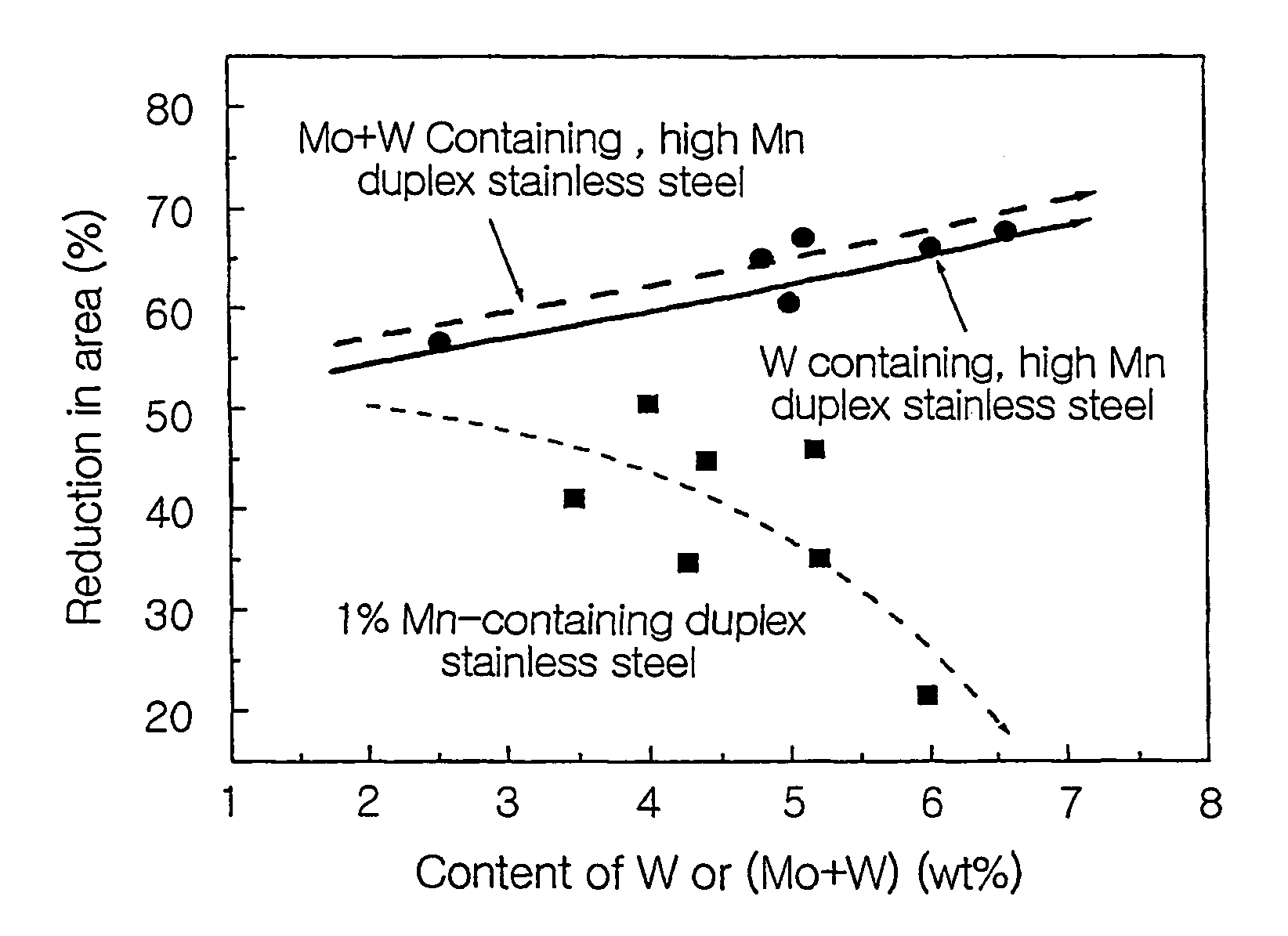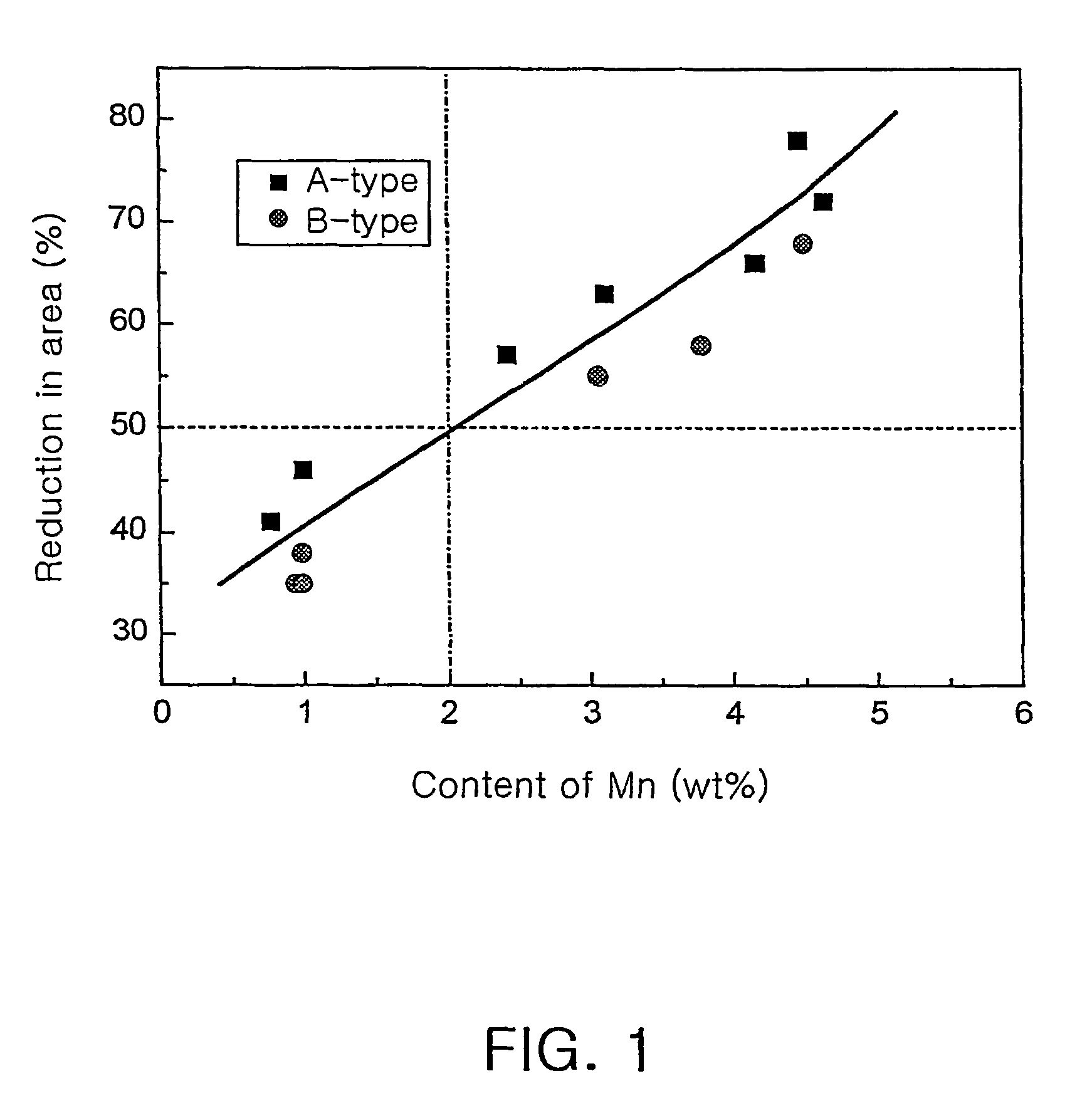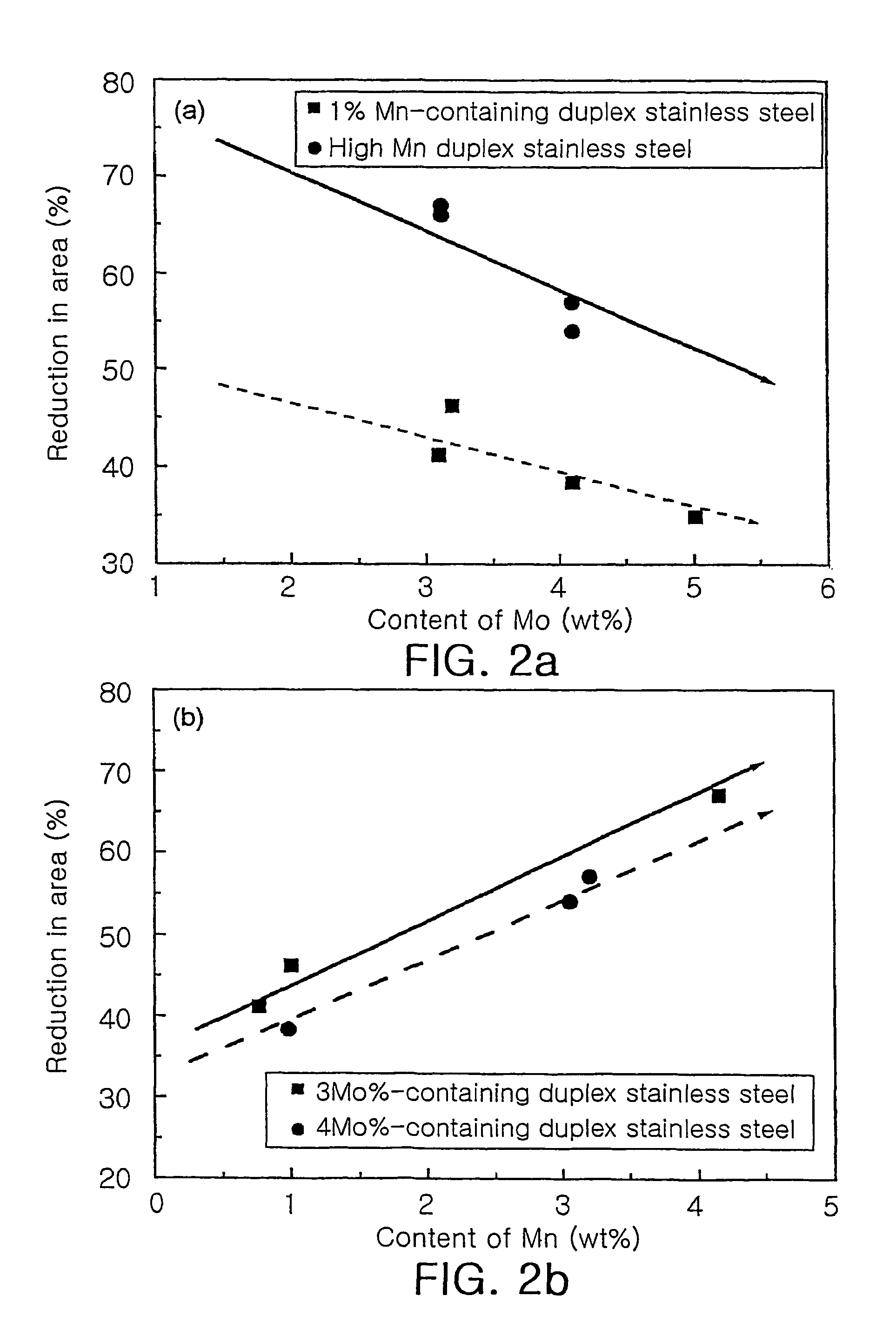High manganese duplex stainless steel having superior hot workabilities and method for manufacturing thereof
a technology of high manganese duplex stainless steel and hot workability, which is applied in the field of duplex stainless steel, can solve the problems of poor hot workability of steel types, deterioration of room-temperature ductility and impact toughness, and drop in corrosion resistance, and achieve excellent hot workability, excellent strength, corrosion resistance and castability.
- Summary
- Abstract
- Description
- Claims
- Application Information
AI Technical Summary
Benefits of technology
Problems solved by technology
Method used
Image
Examples
example 1
[0067]Various steels, each having the composition as shown in Table 2 below, were melted and cast into ingots in a vacuum furnace. The ingots were then solution heated at a temperature of 1,200° C. in a heating furnace for 2 hours to obtain specimens. In carrying out room-temperature tensile test, the ingots or specimens were solution heated under the conditions mentioned previously and then water cooled. Corrosion resistance was measured as weight loss at room temperature in 10% FeCl3.6H2O solution for 72 hours. Corrosion rates of each of the tested steels are summarized in Table 3, below.
[0068]
TABLE 2Chemical composition (wt %)SteelCSiMnCrWMoNiNCuVNbTiTaInventive 10.0270.84.222.55.0—4.30.22—Inventive 20.0300.84.621.34.50.554.30.230.45Inventive 30.0290.94.823.54.80.584.50.200.48Inventive 40.0320.84.627.13.50.464.80.200.51Inventive 50.0280.84.724.94.70.454.40.140.50Inventive 60.0350.84.625.44.60.494.30.180.46Inventive 70.0310.84.524.84.60.574.40.220.49Inventive 80.0300.84.525.12.00....
example 2
[0072]Inventive steels from Table 2 were solution heated under the conditions of Table 4 below, and then their mechanical properties and corrosion rates were measured. The results are presented in Table 4 below.
[0073]
TABLE 4HeatCorrosiontreatmentYield strengthElongationrateSteelcondition(MPa)(%)(mm / year)ComparativeAs cast state60614.80.285Comparative950° C. / 2 hr64113.20.325Inventive1,150° C. / 2 hr65920.20.067Inventive1,250° C. / 2 hr64919.00.082
[0074]As shown in Table 4, the inventive steels which had been solution heated, had higher room-temperature ductility as well as superior corrosion resistance, than comparative steels in an as-cast state.
[0075]Consequently, the inventive steels have equal or superior corrosion resistance relative to conventional steels, such as 304 or 316 type austenite stainless steels, and are excellent in strength. Therefore, the inventive steels can extend lifetimes of chemical equipments, electric power stations, and marine related equipments, and contribut...
example 3
[0076]Various duplex stainless steels, each having the composition as shown in Table 5 below, were melted and cast into ingots in a vacuum furnace. The ingots were then solution heated at a temperature of 1,200° C. in a heating furnace for 2 hours to obtain specimens. In carrying out room-temperature tensile test, the ingots or specimens were solution heated under the conditions mentioned previously and then water cooled. Corrosion resistance was measured as weight loss at room temperature in 10% FeCl3.6H2O solution for 72 hours. Corrosion rates of each of the tested steels are summarized in Table 6, below. The inventive steels from Table 5 all are high corrosion resistant duplex stainless steels, which have PREN values of more than 35.
[0077]
TABLE 5Chemical composition (wt %)SteelCSiMnCrWMoNiNCuVNbTiTaInvetion 10.0300.813.7825.225.10—5.010.300.5Invetion 20.0180.804.0824.974.350.454.690.270.5Invetion 30.0320.824.6424.964.500.484.570.270.5Invetion 40.0490.814.8024.804.520.564.400.270....
PUM
| Property | Measurement | Unit |
|---|---|---|
| corrosion rate | aaaaa | aaaaa |
| temperature | aaaaa | aaaaa |
| temperature | aaaaa | aaaaa |
Abstract
Description
Claims
Application Information
 Login to View More
Login to View More - R&D
- Intellectual Property
- Life Sciences
- Materials
- Tech Scout
- Unparalleled Data Quality
- Higher Quality Content
- 60% Fewer Hallucinations
Browse by: Latest US Patents, China's latest patents, Technical Efficacy Thesaurus, Application Domain, Technology Topic, Popular Technical Reports.
© 2025 PatSnap. All rights reserved.Legal|Privacy policy|Modern Slavery Act Transparency Statement|Sitemap|About US| Contact US: help@patsnap.com



